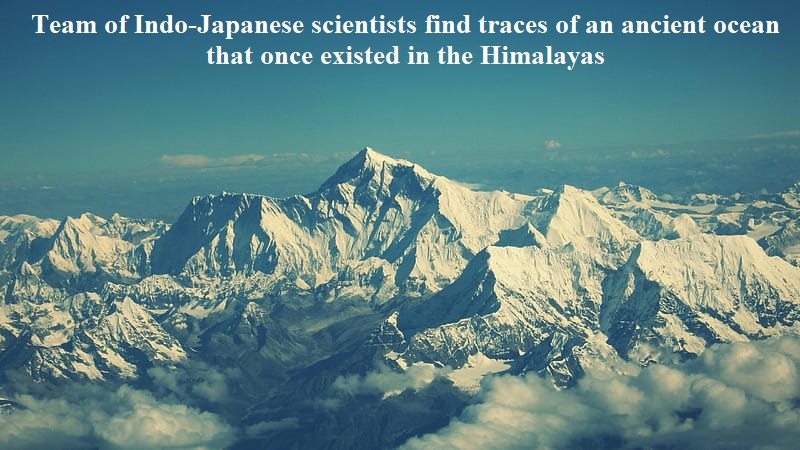
A group of Indo-Japanese scientists has made a significant discovery, finding evidence of an ancient ocean that existed in the Himalayas around 600 million years ago. This joint effort involved researchers from the Indian Institute of Science (IISc) in Bengaluru and Niigata University in Japan, who identified droplets of water trapped in mineral deposits left behind by the ancient ocean.
The analysis of the mineral deposits, containing both calcium and magnesium carbonates, suggests that this finding could shed light on a major oxygenation event in Earth’s history. The mineral deposits serve as a “time capsule” providing valuable information about the paleo oceans, as mentioned by Prakash Chandra Arya, the lead author of the research and a PhD student at the Centre for Earth Sciences (CEaS), IISc.
The study proposes that Earth experienced a period of intense glaciation known as the Snowball Earth glaciation between 700 and 500 million years ago, followed by the Second Great Oxygenation Event, which significantly increased the amount of oxygen in the atmosphere and contributed to the evolution of complex life forms.
However, due to the lack of well-preserved fossils and the disappearance of past oceans, scientists have not fully understood the connection between these events. The exposure of marine rocks in the Himalayas offers a unique opportunity to gain insights into the Earth’s past climate.
The deposit discovered by the team indicates that sedimentary basins lacked calcium for an extended period, likely due to low riverine input. As a result, magnesium deposits formed and trapped the ancient ocean water as they crystallized.
The researchers believe that this calcium deficiency could have caused nutrient deficiency, leading to favorable conditions for slow-growing photosynthetic cyanobacteria. These organisms could have then released more oxygen into the atmosphere, contributing to the Second Great Oxygenation Event.
The study, conducted across a vast stretch of the western Kumaon Himalayas, utilized extensive laboratory analysis to confirm that the deposits indeed originated from precipitation of ancient ocean water rather than from other sources, such as the Earth’s interior.
This discovery not only provides valuable insights into Earth’s past climate and the evolution of life but also has implications for climate modeling. Understanding the conditions of past oceans can offer crucial information for predicting and understanding climate changes in the present and future.

Post Your Comments